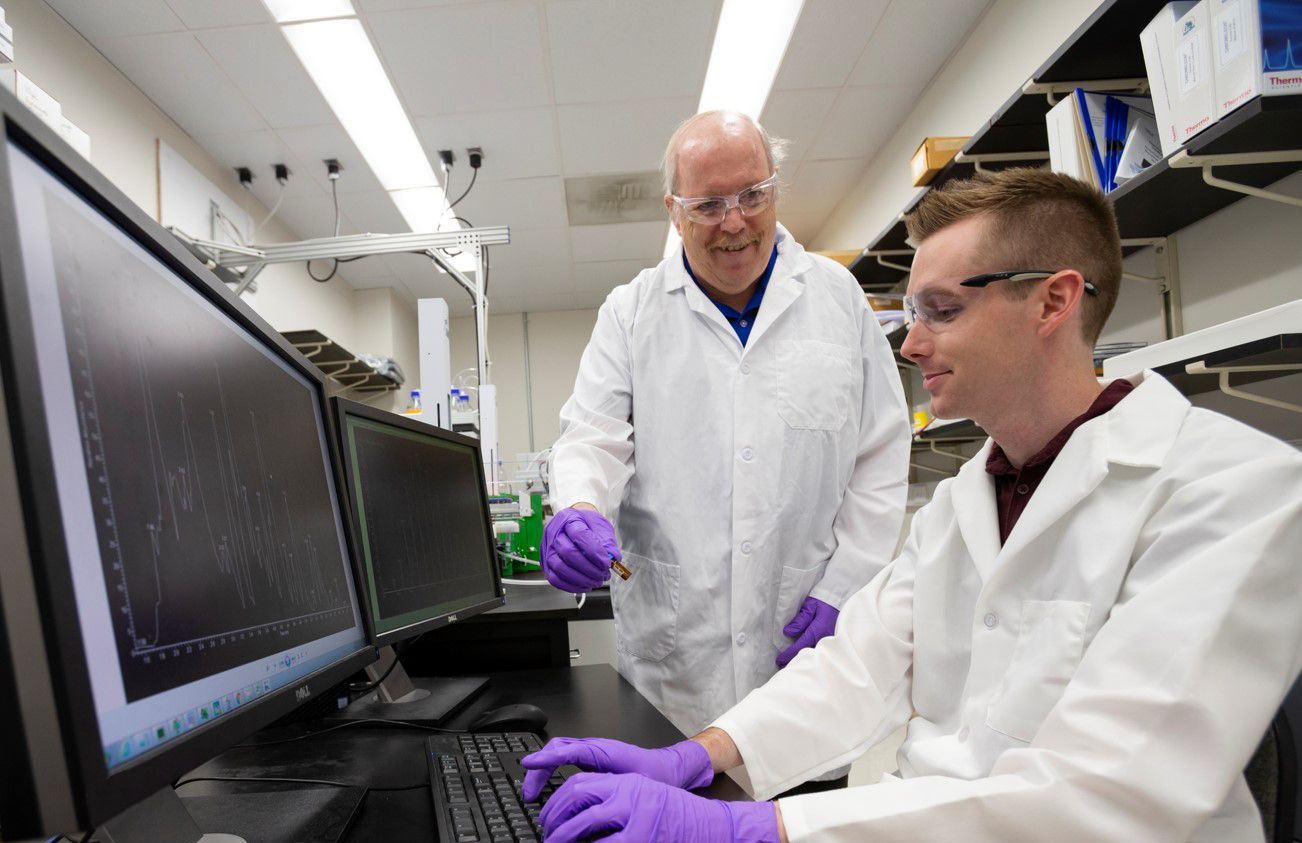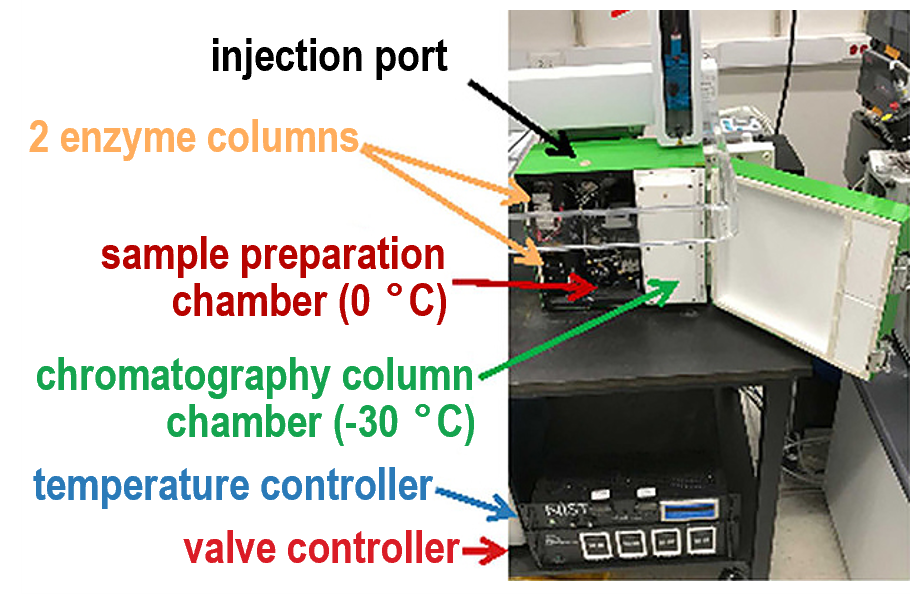Anderson and Hudgens Develop New Instrument for Higher Precision Measurement of Protein Dynamics

NIST-IBBR scientists Kyle Anderson and Jeffrey Hudgens recently reported* the design and performance metrics of a new, ‘sub-zero’ dual-enzyme hydrogen deuterium exchange mass spectrometry (HDX-MS) instrument. The new HDX-MS instrument dramatically improves the precision by which protein dynamics can be measured and could enable more robust application of the technique as tool for quality control of biotherapeutics.
Anderson described the new instrument in two oral presentations at the annual conference of the American Society for Mass Spectrometry and at HPLC 2022 (International Symposium and Exposition on High Performance Liquid Phase Separations and Related Techniques). At the HPLC 2022 meeting, Anderson was recognized as a finalist for the Csaba Horváth Young Scientist Award, an award given for outstanding contributions in separations science.
The efficacy of a protein-based drug depends not only on its molecular composition, but also on its folding dynamics, an attribute that pharmaceutical scientists have proposed for product quality control. To measure folding dynamics, HDX-MS uses measurements of atomic transfer between the protein (which has some of its hydrogen atoms replaced by deuterium at the start) and the surrounding water (which has hydrogen atoms available), thereby identifying portions of the molecular structure that are in contact with the surrounding water. However, HDX-MS for quality control has been limited by undesirable replacement of deuterium by hydrogen before the actual mass measurement is underway (back-exchange), degrading measurement precision and reproducibility.
 This instrument vastly improves the dynamic range and precision of HDX-MS measurements. Current HDX-MS instruments conduct analyses in 0 °C conditions, resulting in measurements with corrupting back-exchange of up to 60 %. Although such data may have value, they are like low resolution photographs—important information about protein dynamical behavior is lost. The new NIST instrument conducts analyses at -30 °C, which suppresses unintended proton exchange by a factor of 2.5 or more. Its design and implementation have overcome practical problems seen in previous efforts. A second novelty is its fluidic architecture that allows aggressive cleaning cycles to minimize measurement bias from protein residues left behind from prior runs.
This instrument vastly improves the dynamic range and precision of HDX-MS measurements. Current HDX-MS instruments conduct analyses in 0 °C conditions, resulting in measurements with corrupting back-exchange of up to 60 %. Although such data may have value, they are like low resolution photographs—important information about protein dynamical behavior is lost. The new NIST instrument conducts analyses at -30 °C, which suppresses unintended proton exchange by a factor of 2.5 or more. Its design and implementation have overcome practical problems seen in previous efforts. A second novelty is its fluidic architecture that allows aggressive cleaning cycles to minimize measurement bias from protein residues left behind from prior runs.
Anderson and Hudgens have facilitated adoption of this technology by providing detailed plans for the hardware in the NIST public archive. Moreover, Trajan Scientific and Medical, a leading provider of HDX-MS systems, has announced that it will soon offer a commercial subzero HDX-MS instrument based on the NIST design.
*K. W. Anderson and J. W. Hudgens. "Chromatography at -30 °C for Reduced Back-Exchange, Reduced Carryover, and Improved Dynamic Range for Hydrogen-Deuterium Exchange Mass Spectrometry." Journal of the American Society for Mass Spectrometry 33, (2022). DOI: 10.1021/jasms.2c00096
